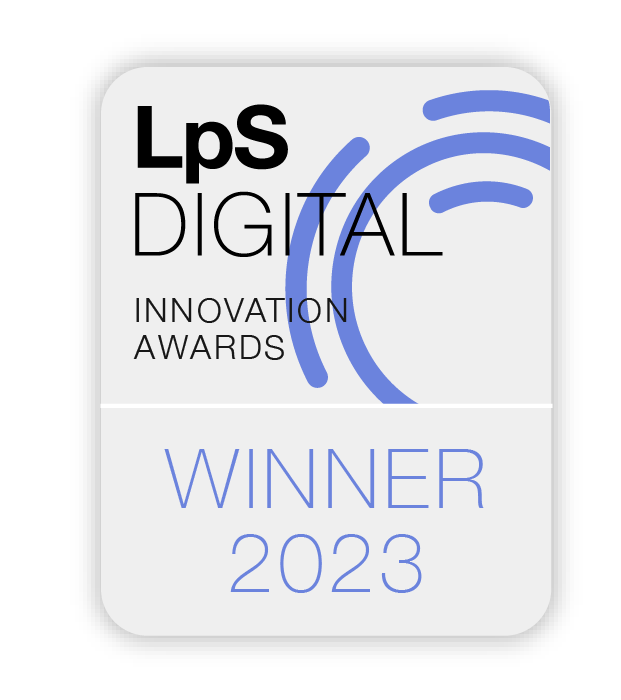
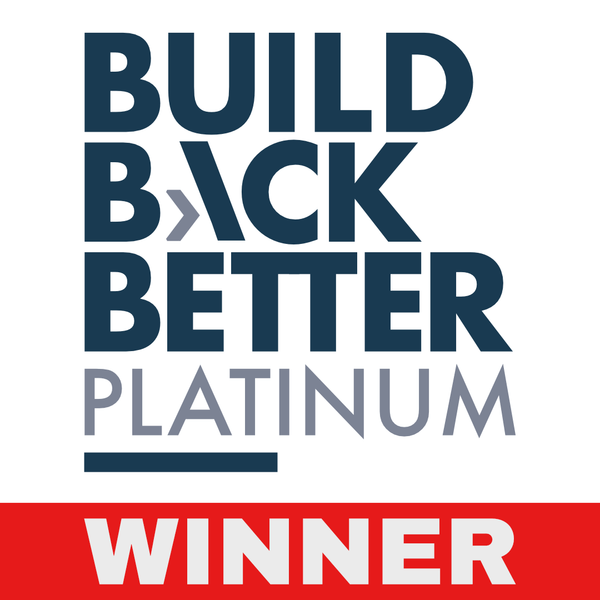
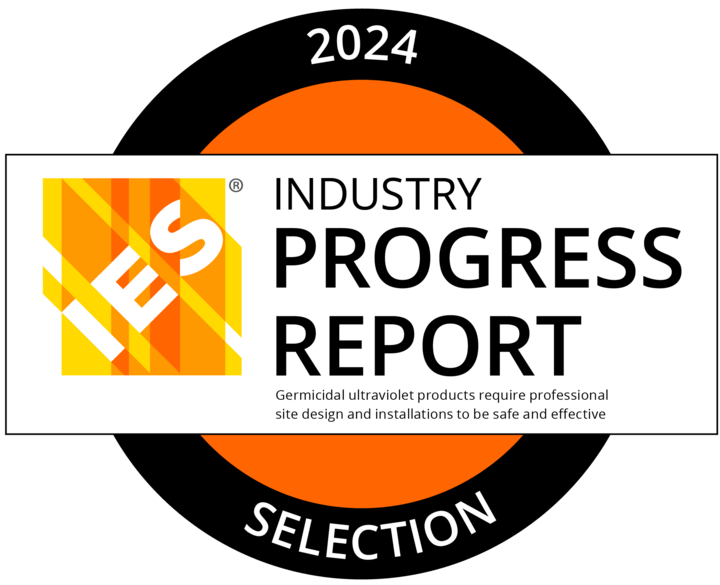
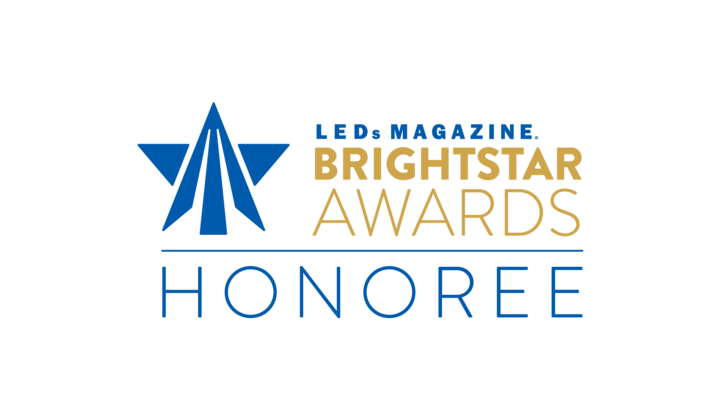
Across the globe, communities are grappling with how to reduce the impact of artificial light at night. Scientific studies have shown that high levels of blue light content adversely affect wildlife, such as birds, insects, and turtles; disrupt the human circadian rhythm at night; and increase glare, which compromises visual acuity for motorists and pedestrians alike.
Available now in LUXEON 5050 Square and LUXEON 3030 HE Plus
Municipalities, states, and governments are addressing the issues of light pollution and wildlife impacts with lighting ordinances that proscribe both the design of light fixtures and the nature of the light that they emit. Maui, Hawaii, for example, has a new ordinance that limits blue content in outdoor lighting to less than 2%. The ordinance went into effect July 1, 2023. Efforts are underway in Europe, Asia, Africa, Australia, North America, and South America.
Blue light content is a critical factor in assessing the harm from night-time illumination. Blue light scatters more than other wavelengths which increases light pollution and glare, and it has significant impacts on the circadian rhythms and behaviors of humans, plants, and wildlife. This is why it is a particular focus of attention.
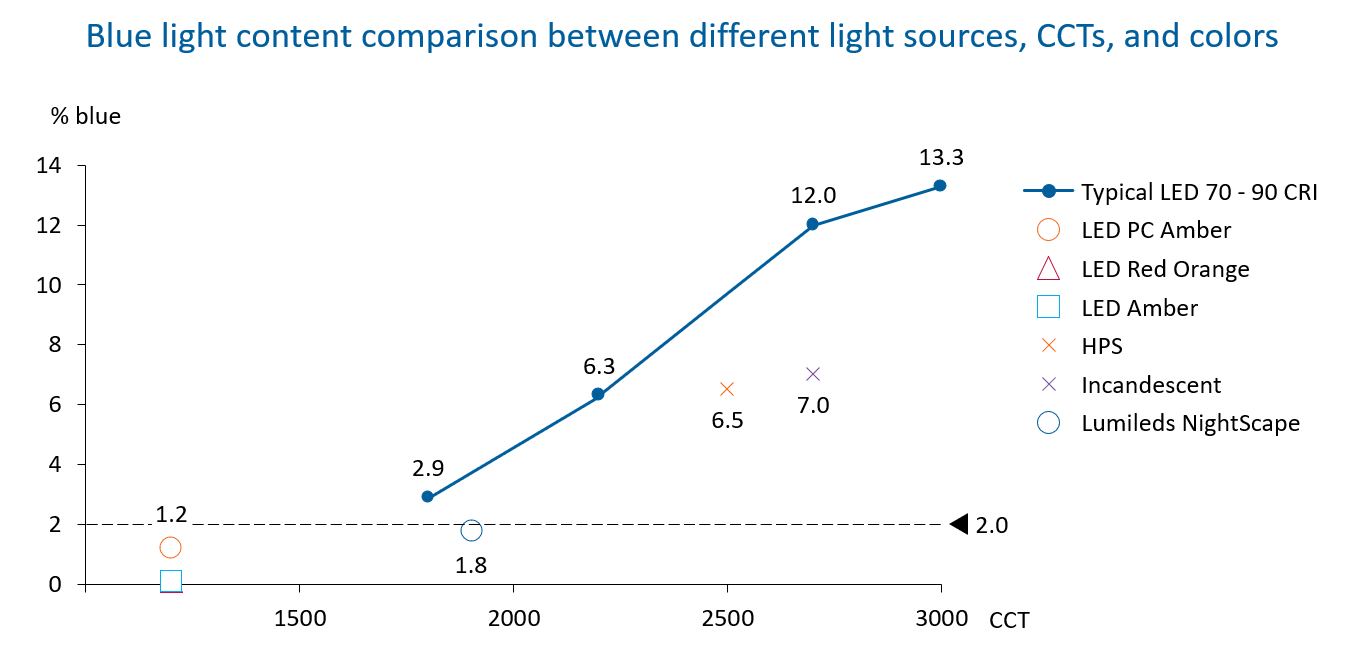
Though LEDs are often quickly – and incorrectly – identified as ’the problem’, LEDs with correlated color temperatures of approximately 2200K – 2700K have similar levels of blue light content compared to HPS or incadescent lamps – 6-7%.
NightScape Technology is the first white light to significantly reduce the percent of blue content between 400nm and 500nm to less than 2%. Through thoughtful luminaire design, control technologies, and lighting designs that don’t 'over-illuminate’ are necessary, it is now possible, thanks to advances in LED technology, to start with the right light for night-time illumination.
We can compare NightScape Technology with other options that may be considered to achieve low blue light solutions.
Some customers consider CCTs of 3000K and 1800K, but those solutions are essentially off the table because they still have relatively high percentages of blue light content and cannot come close to achieving less than 2%. Phosphor converted amber is an option, and it does have less than 2% blue content. But a the end of the day, it’s still amber. So it’s not really white light, it has low efficacy, and its lifetime performance is relatively poor and not appropriate for outdoor lighting where long-life and high efficacy are key drivers of adoption. A third option is to use a 3000K white LED and use optics with an amber filter or amber optics. There are concerns with this approach related to the longevity of the solution and lens degradation which could cause unacceptable lumen depreciation. Another downside is that color rendering is quite poor and the white point is quite far from the black body locus, so the light is a very yellowish-greenish light. You can see in the TM30 color vector graph that the color rendering is poor with very unsaturated colors and poor color discrimination.
NightScape Technology is a very efficient solution with about 185 lm/W and very similar lumen maintenance values to our white LEDs because we use known technologies and it’s close to the black body. The color rendering of NightScape Technology, as represented by the Rf and Rg numbers derived from TM30 as shown below and in the color vector diagram, is very functional and suitable for outdoor illumination. The result is a warm light that is comfortable and welcoming.
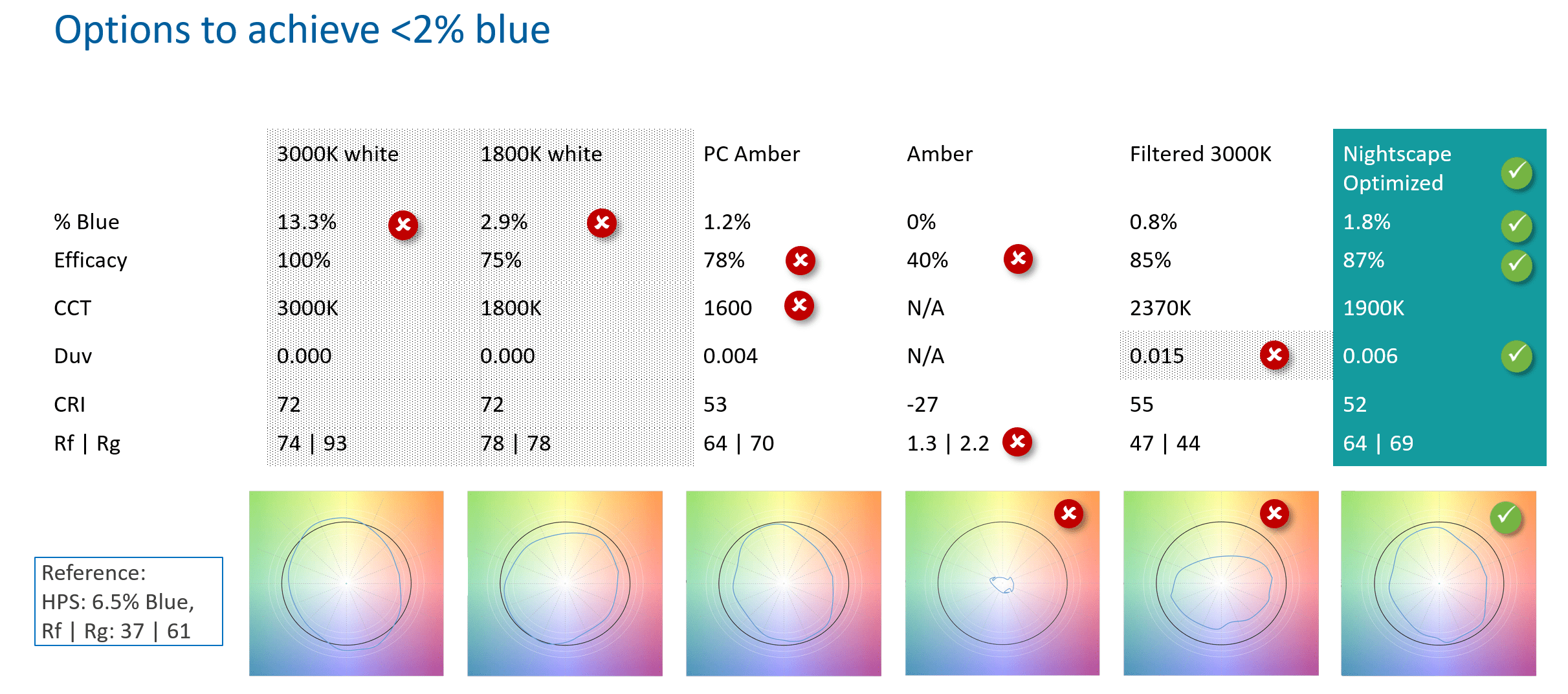
NightScape Technology will first be available in Lumileds LUXEON 3030 HE Plus and LUXEON 5050 Square LED emitters. These two products are workhorses of the outdoor lighting industry and are common to many manufacturers. Over time, the technology can be applied to virtually any of Lumileds white LED lines to meet the lighting community’s needs.
NightScape Technology will first be available in Lumileds LUXEON 3030 HE Plus and 5050 Square LEDs with a CCT of 1900K and blue light content of just 1.8% in the 400-500 nanometer range of the visible light spectrum. These outdoor proven emitters are widely used around the world for outdoor lighting including streetlights, pedestrian, landscape, and similar applications. Over time, the technology can be applied to virtually any of Lumileds white LED lines to meet the lighting community’s needs.
The physical dimensions and optical radiation patterns of the LUXEON 3030 HE Plus and LUXEON 5050 Square LEDs are identical to the existing parts in each portfolio. Any luminaire using either of these products or potentially from other manufacturers can quickly and easily adopt NightScape technology and produce a more environmentally friendly solution.

For more information about NightScape Technology or to request samples, please email [email protected].